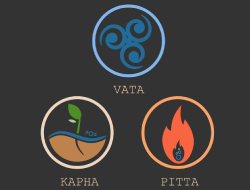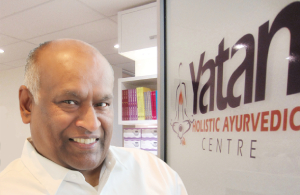 Yoga is an ancient system of Hindu philosophy from India, and means union, co-ordination, harmony, balancing of mind, body and spirit. There are six Vedic philosophies of life, and among them two are about yoga – Sankhya yoga, and Patanjali yoga.
Yoga is an ancient system of Hindu philosophy from India, and means union, co-ordination, harmony, balancing of mind, body and spirit. There are six Vedic philosophies of life, and among them two are about yoga – Sankhya yoga, and Patanjali yoga.
Sankhya yoga describes the origin of the universe, mind, body and spirit in great detail and is more theoretical in nature. It is very helpful in understanding the mystery of and different elements of the universe, and it also describes the function of sense organs, previous life, after death, birth and the universal cosmos.
Patanjali yoga explains the detailed philosophies and practice of the yoga system. This system is most popularly recognised as Yoga these days. The Classical text of this system is found in the form of aphorisms. Every aphorism of the Patanjali yoga sutras has a vast and complex meaning. This text describes eight steps of the yoga system:
1. Yama (good social moral conduct)
2. Niyama (self discipline)
3. Asana (posture)
4. Pranayama (breathing control)
5. Pratyahar (to turn the sense organs inward)
6. Dharana (concentration of mind)
7. Dhyana (meditation)
8. Samadhi (stage of super consciousness).
Of these, Asana, Pranayama and Meditation are more commonly known and practiced. They are known as the Three Limbs of Patanjali yoga. Very little information is found in the original text about these three steps, but they are elaborately explained in 3 classical Hatha yoga texts: the Hatha Yoga Pradipika, the Gheranda Samhita and the Shiva Samhita. Hatha yoga is most popular around the world today, and is very beneficial for general well being and maintenance of health.
Yoga Therapy
 Although yoga is essentially a spiritual practice, with the aim of achieving self realisation – good mental and physical health are a necessary part of being able to progress on the spiritual path to higher levels. Hence these yoga practices, developed to cleanse and purify the body and mind and maintain their optimal function, can also be applied therapeutically to improve a wide range of health conditions.
Although yoga is essentially a spiritual practice, with the aim of achieving self realisation – good mental and physical health are a necessary part of being able to progress on the spiritual path to higher levels. Hence these yoga practices, developed to cleanse and purify the body and mind and maintain their optimal function, can also be applied therapeutically to improve a wide range of health conditions.
Yoga therapy is the application of yoga postures (asanas), pranayama and meditation techniques to help alleviate certain conditions, which could be mechanical, physiological or psychological in nature. Together these yoga practices can have profound physiological effects on the mind-body system.
Yoga therapy is suitable for anyone suffering from chronic or recurrent conditions, and particularly some of the lifestyle related diseases common today. It helps eliminate the aggravated ama (toxins) from your system, balance the doshas and stimulate the essential biochemical substances in the affected organs or system.
Meditation is a method used to increase will power, balance cellular energy, chakra energy, and develop concentration, inspiration and focus. It is helpful in the removal of psychosomatic disorders, for example: anxiety, depression, hallucinations, distracted mind, memory problems, stress and insomnia.
The use of mudras (gestures) is common in yoga practice, being a technique to balance the mind/body and spiritual energy.
Yoga practice also incorporates pranayama (breathing techniques) which unblock the energy channels of the body and create an environment to rebuild the vital current.
For those in good health, yoga is a perfect part of leading a balanced life.




















